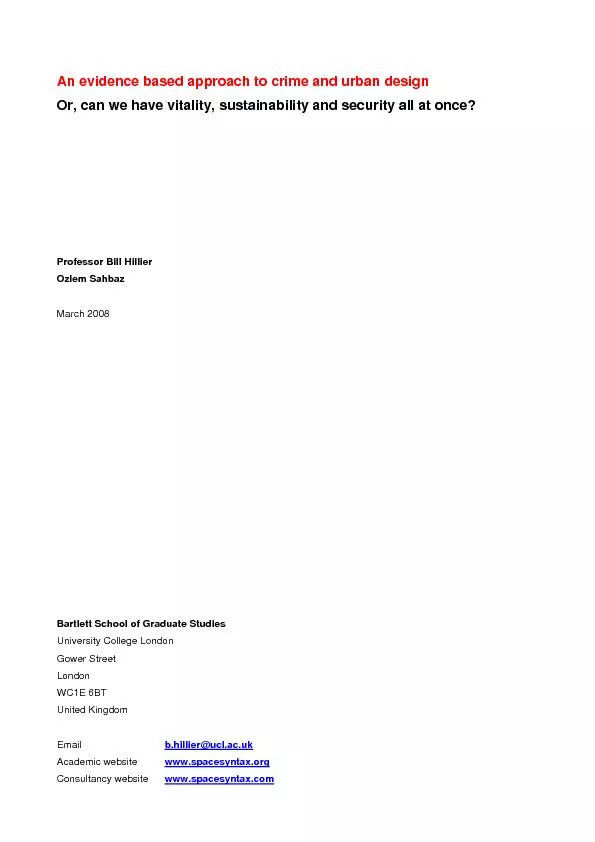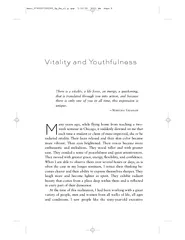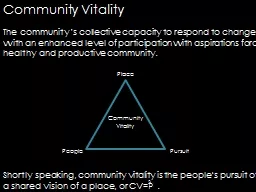PDF-Or, can we have vitality, sustainability and security all at once? Pro
Author : karlyn-bohler | Published Date : 2016-04-23
Academic websitewwwspacesyntaxorg Consultancy websitewwwspacesyntaxcom Professor Bill Hillier Ozlem Sahbaz An evidence based approach to crime and urban design PageDesign
Presentation Embed Code
Download Presentation
Download Presentation The PPT/PDF document "Or, can we have vitality, sustainability..." is the property of its rightful owner. Permission is granted to download and print the materials on this website for personal, non-commercial use only, and to display it on your personal computer provided you do not modify the materials and that you retain all copyright notices contained in the materials. By downloading content from our website, you accept the terms of this agreement.
Or, can we have vitality, sustainability and security all at once? Pro: Transcript
Download Rules Of Document
"Or, can we have vitality, sustainability and security all at once? Pro"The content belongs to its owner. You may download and print it for personal use, without modification, and keep all copyright notices. By downloading, you agree to these terms.
Related Documents














